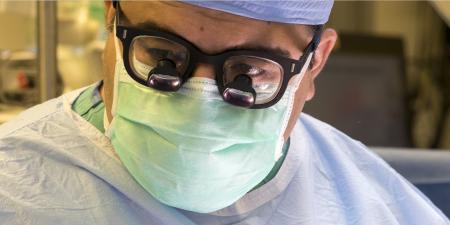Abstract
Therapeutic misconception can be especially challenging at large research-intensive academic medical centers, where boundaries between clinical care and research can become murky. In early stage clinical trials, for example, physicians often encourage patients to enroll in a drug or an intervention study as part of a treatment plan. As a research ethicist, I have found myself having to temper researchers’ enthusiasm to prevent their overemphasizing positive benefits to participants. One strategy I’ve used is to encourage researchers to collaborate with treating physicians and to continually engage participants in assessing risks and benefits. This strategy has been helpful not only in early stage trials but also in translational genomic studies in which research can be used in part as a means of making costly testing available to patients.
Mistaking Research for Treatment
What do we mean by misconception? Essentially, a misconception is an erroneous or mistaken belief about how something works, what something is, or why something occurs; it is a species of falsehood. In research settings, a particular false belief has been described by the term therapeutic misconception.
The notion of therapeutic misconception was first defined in the 1980s as a research participant’s mistaken belief that decisions about her personal medical care are being made solely for her benefit while she is a participant in a research study.1,2 That is, participants might not appreciate the distinction between their roles as research participants contributing to the creation of generalizable knowledge and their roles as patients receiving personalized medical care. Since the introduction of the concept, others have conducted empirical studies of this phenomenon and have refined what constitutes therapeutic misconception.3-8 There has been recognition that it is not only patient-subjects who have misconceptions about the goals of the study in which they are enrolled but also researchers and clinicians.9-13 Therapeutic misconception, a concept that has been discussed and studied for several decades, is increasingly a challenge in the current era of translational science (which has been referred to as research going from “bench to bedside to backyard”).14
Curbing Enthusiasm
For the last 10 years, I have been a member of research ethics consultation services (RECS), first at the Mayo Clinic and currently at Penn State College of Medicine. RECS began appearing in large academic research institutions in the middle of the last decade of the 20th century and aim to maximize the benefits while at the same time minimizing the harms of science for research participants, patients, researchers, and the public.15-17In this role, I have been asked to participate on studies—specifically, to be involved in the consent process. Good informed consent is not a one-time event; it is a continuous discussion during which a participant is reminded of the voluntary nature of her participation, the potential risks and benefits to her, and the purpose of her participation. Reiterating that research goals are based on research questions—not the participant’s condition—and that benefits to her are not expected can help minimize therapeutic misconception and the false beliefs it can generate. Investigators who have requested my participation have wanted assistance in addressing therapeutic misconception and in ensuring that research participants appreciated that the chief goal of the study was to generate generalizable knowledge.
One of the first studies on which I was consulted was an early adipose-derived human mesenchymal stromal cell trial for amyotrophic lateral sclerosis (ALS) patients.18,19 The major purpose of my presence was to observe the consent process with patients. I would debrief with the investigator, who obtained participants’ consent, to share my reflections on how the conversation went; not uncommonly, I would point out participants whom I felt might not have understood ethically and clinically relevant distinctions between their participation in research and their parallel clinical care. Investigators also sought my expertise to assure themselves that they were keeping their own enthusiasm about potential benefits in check. Because ALS patients are vulnerable and desperate for a cure and because this was a stem cell trial and stem cells are considered new cutting-edge technology with complex risks, they believed it was critical to have my involvement and guidance.
Trading False Beliefs for False Hope?
Over time, my role became smaller because this investigative team was particularly sensitive to the nature of its participant population: desperate patients and families who might be vulnerable to even mere hints of hyperbole. This experience occurred about 7 or 8 years ago, but it stands out because while there was great potential for consent conversations to be muddled and unintentionally misleading—due to technical complexity and power imbalances among clinicians, investigators, and patient-subjects—they weren’t. That is, the team’s awareness of participants’ desperation, the hype around the technology, and their own enthusiasm and excitement about their novel approach actually led to some of the best informed consent conversations I have witnessed. However, despite the thoughtful and deliberate steps the team took in recruiting and enrolling participants and in conducting informed consent discussions, some participants who enrolled held the false belief that they might benefit directly from participation. Indeed, because this was an early phase 1 trial with a novel approach to stem cell therapy, the chance for any kind of benefit to a participant was, as the saying goes, “slim to none, and slim was out of town.” The existence of therapeutic misconception and the extremely low chance of personal benefit raised an important ethical question about communication: How should one communicate clearly, truthfully, and compassionately to patient-subjects who have very little hope? One goal was to try to eliminate false beliefs without creating false hope.
My experience as a consultant on the ALS study has led me to assess more closely the role of hope in medicine versus research and to consider in more detail how to protect the good that comes from providing hope. How do we mitigate an unfounded hope in families and in patient-subjects whose prognosis is frightening—with no relief in sight except death—while not squashing an informed optimism, or what some have called therapeutic optimism?6 These types of discussions continue to be important for researchers to engage in with research ethicists and social scientists who study research participant attitudes, perceptions, and understanding, particularly in large research-intense academic medical centers. Here, in the epicenters of translational biomedical research, the difference between being a patient and a research participant is not always clear cut or black and white.
Translational Genomic Research Challenges
This gray space, where the boundaries between clinical care and research are blurry, can be complicated to navigate because of the custom of maintaining research and clinical care as two distinct activities, with no overlap.20,21 Maintaining a firm wall between the two is increasingly challenging, including in translational genomics. Translational genomic research, eg, studying the use of genome sequencing for diagnosis, identification of potential therapies, or prescribing medications is moving forward at a rapid pace.21 While these studies have clear research objectives about creating generalizable knowledge, findings with potential medical benefits to participants or their relatives can also be generated. As Churchill et al. have noted, such findings are “necessarily a secondary aim, a felicitous by-product of the major research purpose, and not the chief agenda.”22 It’s also a gray space because participation typically involves not much more than a blood draw or permission to use blood or other tissue left over from a clinical procedure, with the physical risks from a blood draw or clinical procedure that would be (or that had been) performed regardless of research participation seeming almost nonexistent. However, the lack of a tangible research intervention might make therapeutic misconception even more of a concern. My second example is a translation genomic study in oncology for which I was asked to join a research team as co-investigator, with my primary role being the “curber of enthusiasm” (C Rentmeester, written communication, April 2018).
The specific translational genomic study—a clinical study in the view of the institutional review board but really a discovery study with no intervention—was aimed at seeing whether any targetable genomic changes in participants’ tumors could be identified with mate-pair sequencing.23 Mate-pair sequencing and analysis allow for ready identification of large deletions, duplications, and other structural changes to chromosomes that can affect gene function. The study team was specifically after targetable changes to the genome that would not otherwise be considered in clinical decision making about what chemotherapies to use for treatment. It was a discovery study, but it also had potential benefit to the individual participants because (1) most participants had failed standard therapy and (2) the sequencing might identify a molecular genetic target for a therapy that would not otherwise be used.
The investigators were cognizant of their limitations; that is, they knew they were extremely excited about the potential clinical benefit to individual participants. This exuberance, they knew, could possibly lead to biased informed consent discussions by overemphasizing potential benefits to participants. Similar to the ALS study, many of these participants were desperate for a beneficial treatment or cure. The investigators asked me to join the team to oversee the consent process as well as any “return of research results” communications to participants. As it happened, I ended up obtaining consent from many of the participants. I also participated in most of the communications with individual participants and with the participants’ oncologists when a research result rose to the level of being potentially clinically useful. My personal goal was to make the communications clear and explicit about what was actually known and had evidence behind it versus what was anecdotal and speculative. This task was challenging: the investigators were incredibly optimistic about their work, the oncologists were determined to find something for these patients, the technology was exciting, and we all wanted to do something for these research participants who were desperate patients. As biomedical scientists, bioethicists, and clinicians, we had each gotten into the business to help patients.
One participant whom I will likely remember for some time is AH, a woman in her mid-thirties with ovarian cancer. She had undergone several rounds of chemotherapy with limited success in shrinking the tumor. I had engaged her in the process of consent to the study and was involved in several subsequent conversations. In all of these interactions, I was challenged by my own desire to help AH remain optimistic while at the same time being realistic about the very small chance that this discovery research would identify her silver bullet. Even if a pathogenic variant in her tumor genome was identified that was targeted by a drug AH had not tried (because that gene was not usually targeted for her type of cancer), a number of steps would need to be taken in both research and clinical labs to validate the finding. Then we would have to get access to the drug (likely for off-label use) or find a clinical trial for which AH qualified. Balancing optimism with realism was a continual challenge, especially with AH. I spoke with AH several times about her role as a research participant (not as a patient) in this discovery research project (with an emphasis on discovery) while also keeping her abreast of the study’s progress, hoping that hearing about it might help maintain her therapeutic optimism. I still sometimes wonder how successful I was in balancing optimism with realism.
Conclusion
Therapeutic misconception might not often be thought of as species of falsehood. Falsehood is about misunderstanding or thinking inaccurately about something. In therapeutic misconception, that “something” is the distinction between research participation, in which the relationship is between the investigator or study team and the participant, and clinical care, in which the relationship is between the patient and the clinician or clinical team. While some have argued that worrying about therapeutic misconception can undermine rather than promote participants’ understanding and informed consent,24 others argue that being concerned about therapeutic misconception and its clinical and ethical relevance is more important than ever because the assumptions of and relationships between researchers and participants (and clinicians and patients) can be rather muddled in translational research, learning health systems, and research-intensive academic medical centers,20 where clinicians are also investigators, patients are also participants, and research results can have clinical usefulness to participants.
Therapeutic misconception is a unique type of false belief, yet it is an important one in medical research and medicine. Clinicians and researchers alike need to continue being in tune to its challenges and should be able to recognize when they themselves are vulnerable to it. As I—and investigators who have pulled me into their studies—have discovered, individuals like me can fill a niche helping patients and investigators navigate the translational blurriness.
References
- Appelbaum PS, Roth LH, Lidz C. The therapeutic misconception: informed consent in psychiatric research. Int J Law Psychiatry. 1982;5(3-4):319-329.
- Appelbaum PS, Roth LH, Lidz CW, Benson P, Winslade W. False hopes and best data: consent to research and the therapeutic misconception. Hastings Cent Rep. 1982;17(2):20-24.
-
National Bioethics Advisory Commission. Ethical and Policy Issues in International Research: Clinical Trials in Developing Countries. Vol 1. https://bioethicsarchive.georgetown.edu/nbac/clinical/Vol1.pdf. Published April 2001. Accessed May 14, 2018.
-
National Bioethics Advisory Commission. Ethical and Policy Issues in International Research: Clinical Trials in Developing Countries. Vol 2. https://bioethicsarchive.georgetown.edu/nbac/clinical/Vol2.pdf. Published May 2001. Accessed May 7, 2018.
-
Henderson GE, Churchill LR, Davis AM, et al. Clinical trials and medical care: defining the therapeutic misconception. PLoS Med. 2007;4(11):e324. doi:10.1371/journal.pmed.0040324.
- Horng S, Grady C. Misunderstanding in clinical research: distinguishing therapeutic misconception, therapeutic misestimation, and therapeutic optimism. IRB. 2003;25(1):11-16.
- Miller FG, Brody H. A critique of clinical equipoise. Therapeutic misconception in the ethics of clinical trials. Hastings Cent Rep. 2003;33(3):19-28.
- Kimmelman J, Levenstadt A. Elements of style: consent form language and the therapeutic misconception in phase 1 gene transfer trials. Hum Gene Ther. 2005;16(4):502-508.
- Joffe S, Cook EF, Cleary PD, Clark JW, Weeks JC. Quality of informed consent in cancer clinical trials: a cross-sectional survey. Lancet. 2001;358(9295):1772-1777.
- Joffe S, Weeks JC. Views of American oncologists about the purposes of clinical trials. J Natl Cancer Inst. 2002;94(24):1847-1853.
- Taylor KM, Kelner M. Interpreting physician participation in randomized clinical trials: the Physician Orientation Profile. J Health Soc Behav. 1987;28(4):389-400.
- Taylor KM. Integrating conflicting professional roles: physician participation in randomized clinical trials. Soc Sci Med. 1992;35(2):217-224.
- Taylor KM, Feldstein ML, Skeel RT, Pandya KJ, Ng P, Carbone PP. Fundamental dilemmas of the randomized clinical trial process: results of a survey of the 1,737 Eastern Cooperative Oncology Group investigators. J Clin Oncol. 1994;12(9):1796-1805.
- Murtagh MJ, Demir I, Harris JR, Burton PR. Realizing the promise of population biobanks: a new model for translation. Hum Genet. 2011;130(3):333-345.
- Cho MK, Tobin SL, Greely HT, McCormick J, Boyce A, Magnus D. Strangers at the benchside: research ethics consultation. Am J Bioeth. 2008;8(3):4-13.
- Cho MK, Tobin SL, Greely HT, McCormick J, Boyce A, Magnus D. Research ethics consultation: the Stanford experience. IRB. 2008;30(6):1-6.
- McCormick JB, Sharp RR, Ottenberg AL, Reider CR, Taylor HA, Wilfond BS. The establishment of research ethics consultation services (RECS): an emerging research resource. Clin Transl Sci. 2013;6(1):40-44.
-
Lindner U, Kramer J, Rohwedel J, Schlenke P. Mesenchymal stem or stromal cells: toward a better understanding of their biology? Transfus Med Hemother. 2010;37(2):75-83.
- Staff NP, Madigan NN, Morris J, et al. Safety of intrathecal autologous adipose-derived mesenchymal stromal cells in patients with ALS. Neurology. 2016;87(21):2230-2234.
- Beauchamp TL, Saghai Y. The historical foundations of the research-practice distinction in bioethics. Theor Med Bioeth. 2012;33(1):45-56.
- Wolf SM, Burke W, Koenig BA. Mapping the ethics of translational genomics: situating return of results and navigating the research-clinical divide. J Law Med Ethics. 2015;43(3):486-501.
- Churchill LR, King NM, Henderson GE. Why we should continue to worry about the therapeutic misconception. J Clin Ethics. 2013;24(4):381-386.
-
Harris FR, Kovtun IV, Smadbeck J, et al. Quantification of somatic chromosomal rearrangements in circulating cell-free DNA from ovarian cancers. Sci Rep. 2016;6:29831. doi:10.1038/srep29831.
- Wendler DS. Time to stop worrying about the therapeutic misconception. J Clin Ethics. 2012;23(3):272-287.



